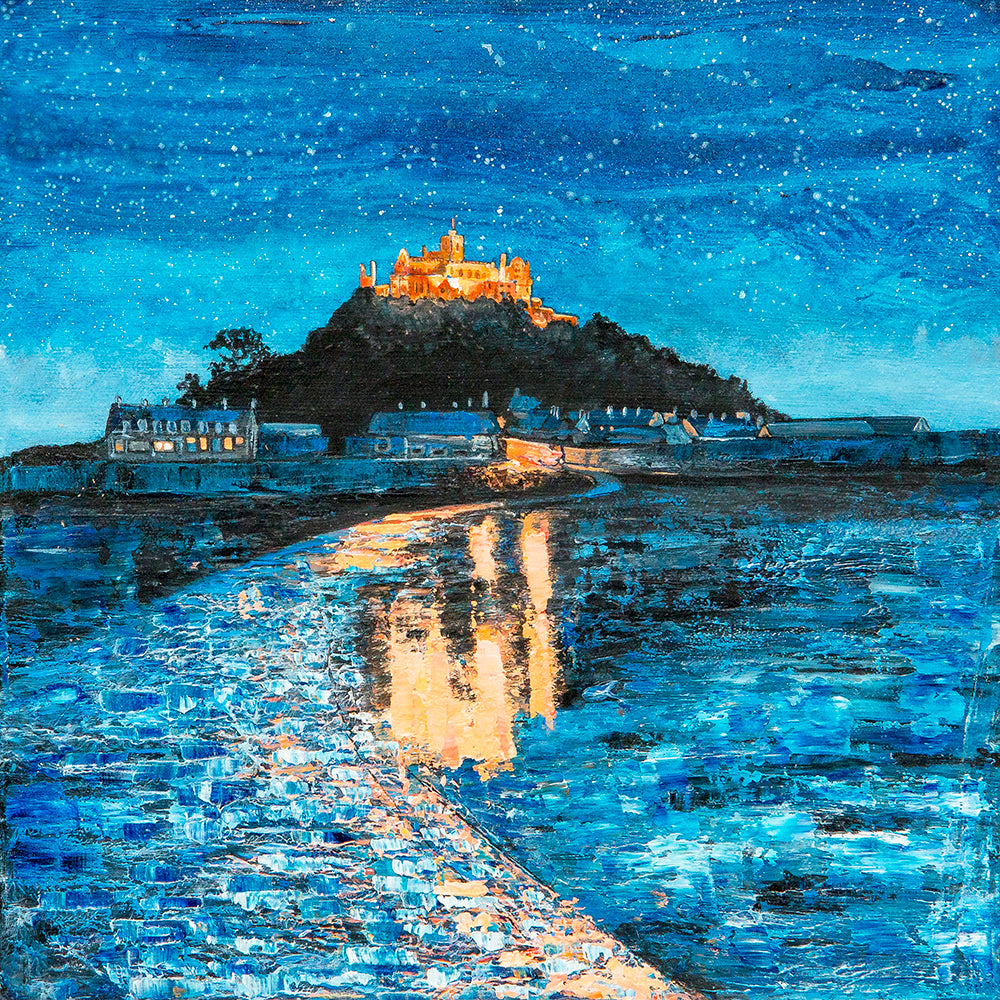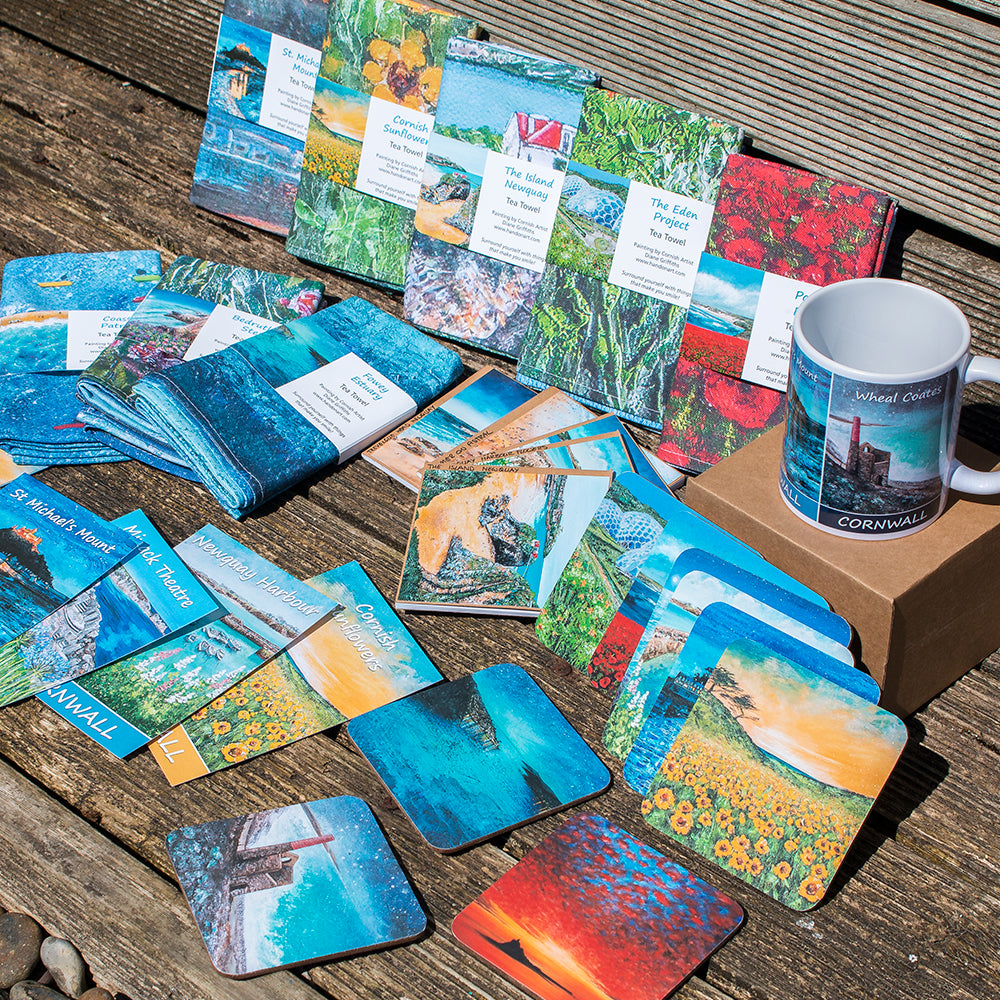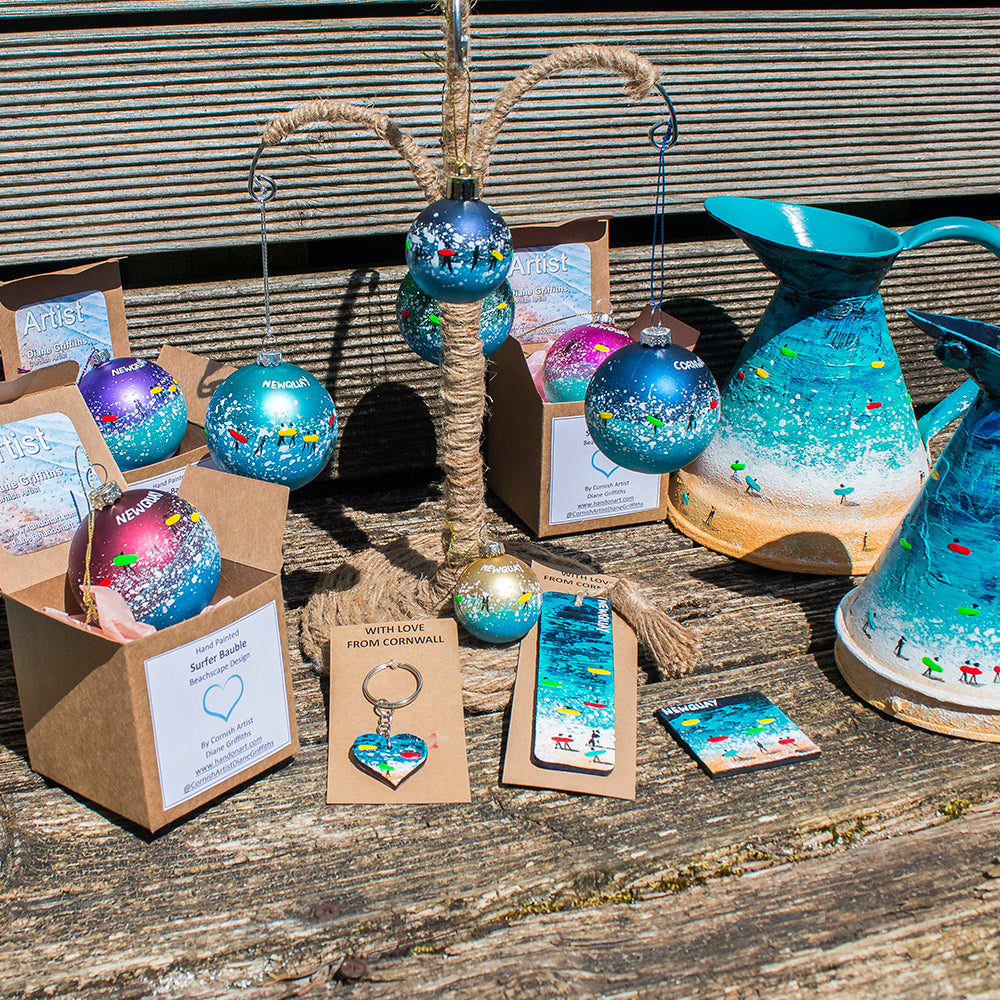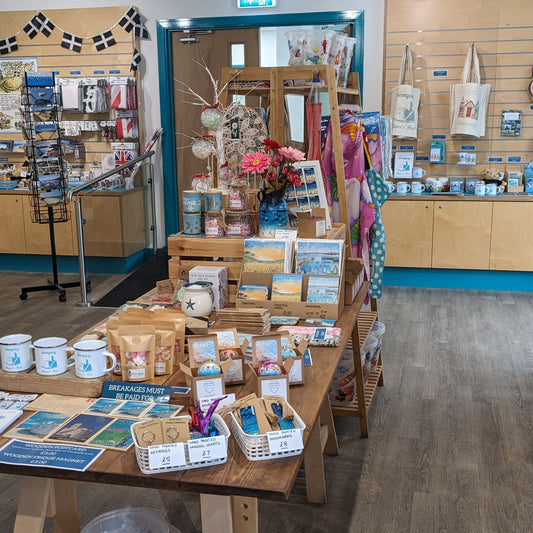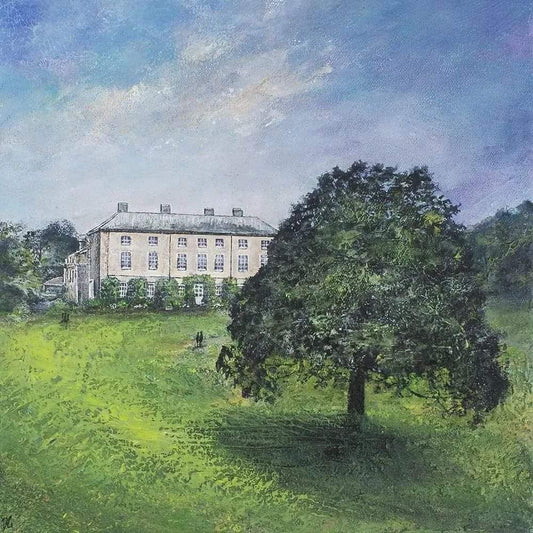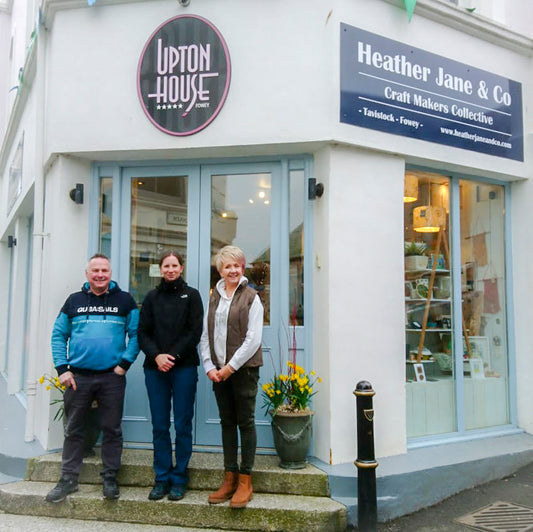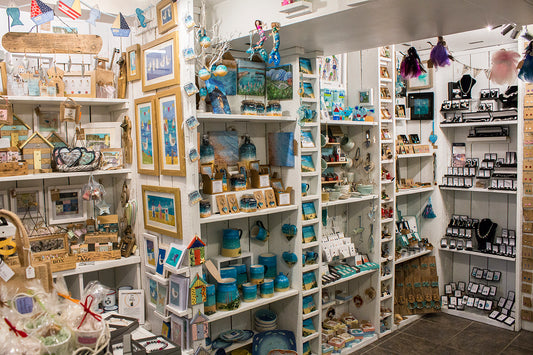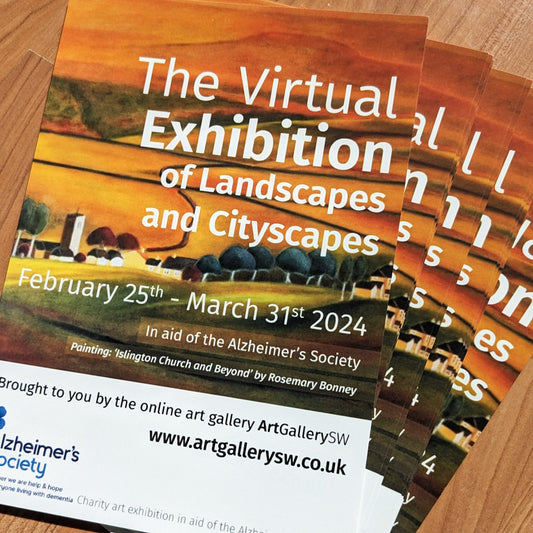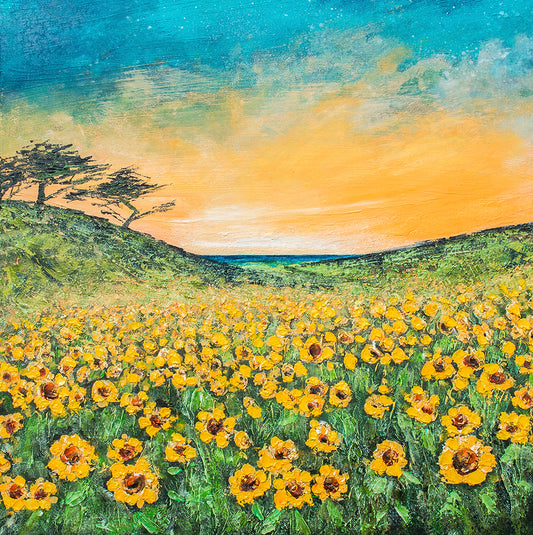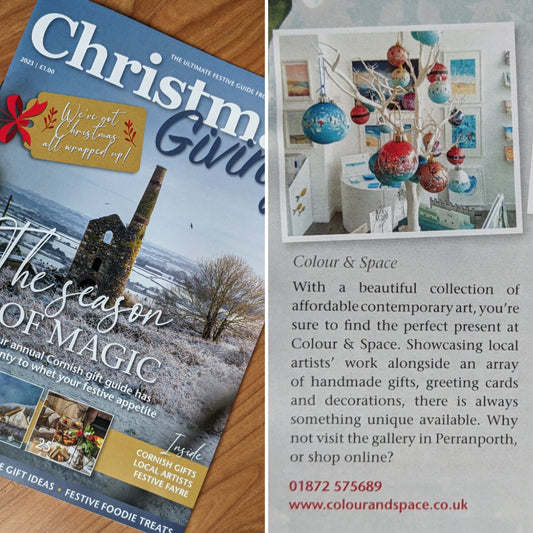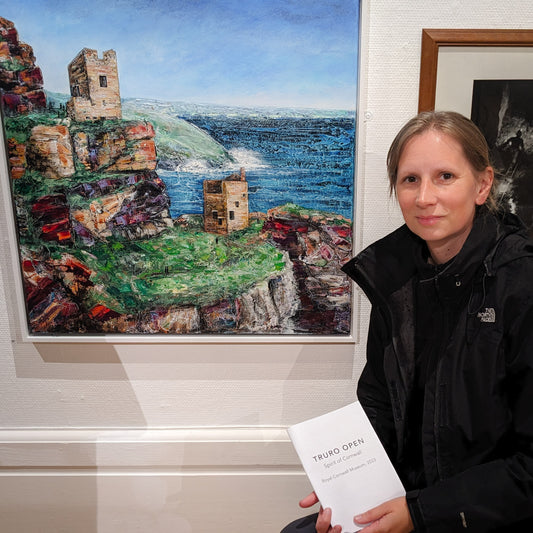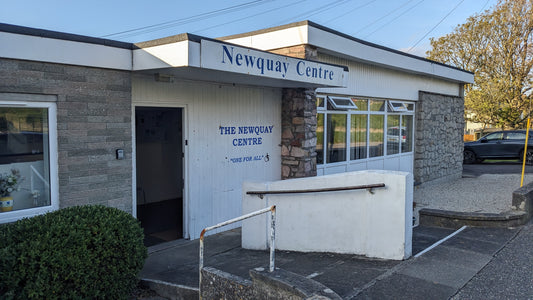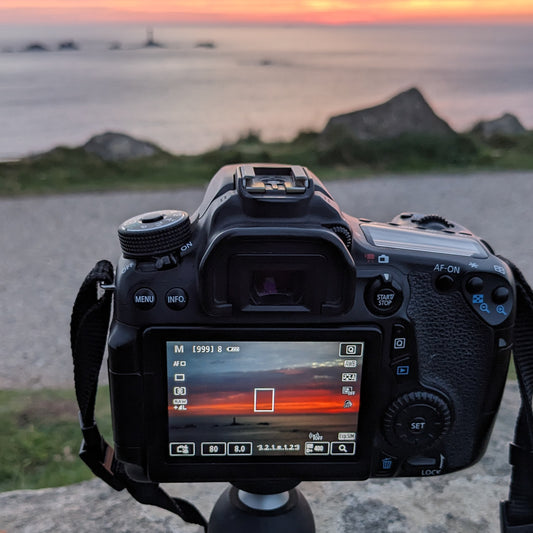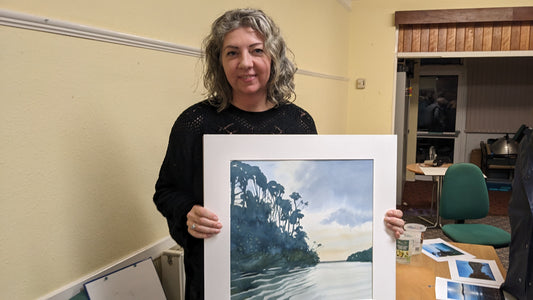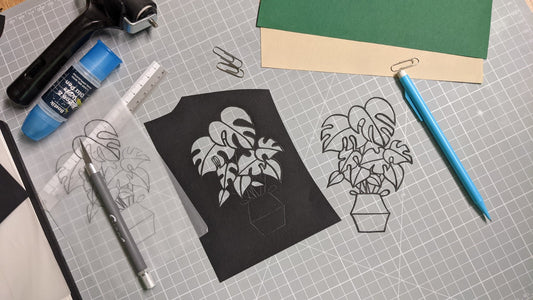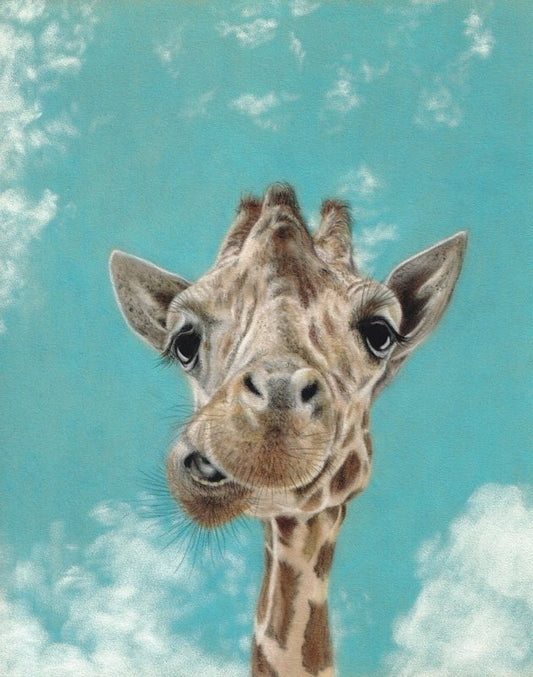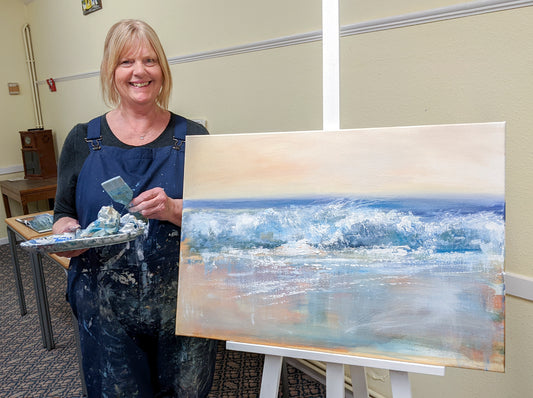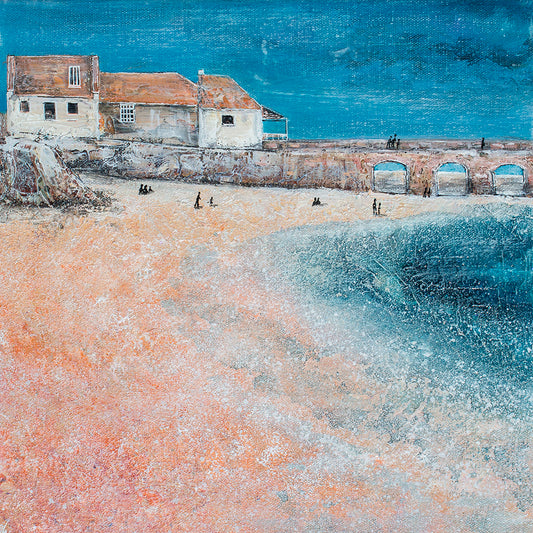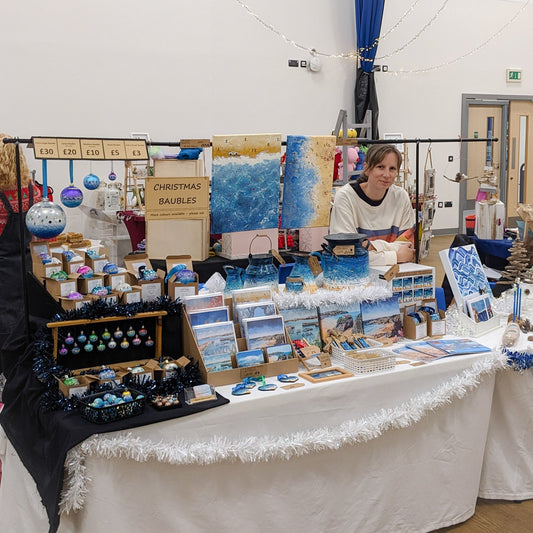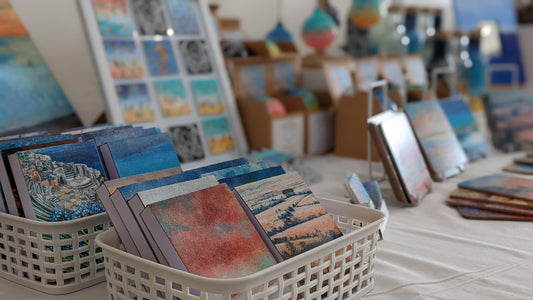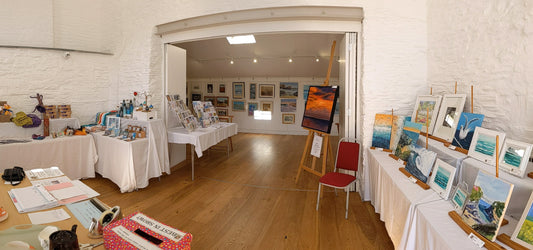I've been following Sue on Instagram for a while and love her raw interpretation of Cornwall; wild seas, tangled hedges and crazy skies. I wanted to find out more about her journey.
1. Can you give me a bit of background about you and what lead you to creating Cornish art?
I was born in Bude on a farm and have always had an affinity with the sea and coast. I had a period of illness with ME and it was at this time that I started to reacquaint myself with paint. I started in watercolours which led on to acrylic and then oils. I am self taught but have attended quite a few different courses, which has helped immensely to use different media and techniques to build my own repertoire . I love to experiment and am always trying different ways of producing paintings and effects whilst trying to keep the raw physicality of the act of painting itself. My preferred way is to start outside with sketches or even a bare canvas and then finish it in the studio.
2. It can be quite challenging for an artist to get their work seen – what advice would you give to other artists looking for exposure?
I was lucky to have a break with an interior designer and this gave my work some kudos. I like to do social media and am quite active and have been lucky to have several magazine articles. Advice... Do what you do with confidence and conviction and have a decent website that updates regularly to people can find you. There are a lot of artists out there; it's quite difficult at times, but just trust in yourself.
3. I can see that you’ve done some solo shows – which was your favourite and why?
I have done several solo shows locally in Bude at the lovely Willoughby Gallery. It pushes me to produce a body of work specifically for this each year. I think 'Mordros' is my favourite. One of the earliest, it wasn't so much about the paintings as the atmosphere the word evoked. Mordros means ' the sound of the sea' in Cornish.
4. Is there an artwork you are most proud of and why?
I think my first aluminium painting is one I am most proud of. Mainly because it was a massive leap of faith painting on aluminium for the first time and as a commission piece, I had to get it right. Over 1500 cm long by 70, I used rollers, scrapers and lots of medium with acrylics to get the effect for 'Hot summers night'.
5. What is the best method for people to get in touch with you?
I have a contact form on my website and most people contact me through this as it is direct and they can also sign up to my newsletter. I also get some contact through social media , but I then direct them to email as I can organise it easily from there.
suereadart@gmail.com
Conclusion
I love Sue's art and can really relate to her tip about attending courses and learning different techniques. Now I've joined the Newquay Society of Artists I hope to attend some eye-opening demonstrations to help broaden my skill-set.
I also completely agree with her advice to work with confidence and conviction. The times when I paint the worst is when I have lost confidence in myself; I experiment less, question each brush-stroke, sometimes I'm too paralysed to paint. As artists we need to believe in ourselves and keep painting regularly. It's ok to make mistakes, that's what helps us grow and become better artists.
I believe that I grow the most after I've had a bad painting or rejection. It hurts, it really hurts, but I come out fighting the other side - I get straight back to it; either researching new ideas or approaches. I usually uncover something new to try which pushes me upwards and on-wards. Something I may not have discovered if I hadn't been tested in that way.
Use every success and failure to move forward, but don't stay still.
EDITED - In March 2022 Sue was kind enough to join the Newquay Society of Artists for an evening demonstration:
Born in Bude Sue Read is a self-taught artist – one of a huge community of self-taught artists nowadays and it’s somewhat refreshing to get the feeling that this isn’t something to be frowned upon anymore. She loved painting as a child, but didn’t really get back into it until her early 40s and turned professional in her 50s.
She used to paint from photos but now she’s evolved her style and paints mainly from memory. Often it’s the memories of her bracing sea swims and getting close to the waves which gives her work that feeling of movement. That moment when you’re trying to figure out what the wave is going to do – whether to dip under or jump over – which leaves you with that invigorating feeling of fresh excitement but also a better understanding of how the elements of the waves fit together and how the weather moves them.
Essentially her paintings are snapshots of things she’s glimpsed when in the sea. Love that!
As we saw in her recent TV appearance on Rick Stein’s show, she also often starts her paintings outside on the beach, allowing her surroundings to be her initial inspiration. She isn’t afraid to try anything in her artwork, to take those risks and allow herself to push through the panic if things don’t always work out.
She also loves art workshops and retreats, of which she’s already done a couple this year. Now this is something to aspire to; since her appearance on TV her work has been hugely popular, but she hasn’t allowed it to overtake her life. She remains true to her artistic desire to grow as an artist, rather than churn out work that she knows she could easily sell.
As Sue started to paint we saw her use of her well-known palette of oyster shells, she doesn’t put any paint down the sink, once it’s dry she peels the paint off the oyster shells and deposits in a bin.
She had already prepared a base for us, so Sue started to fill in the sky and build up her wave using a variety of tools; from a brush to a palette knife, through to a rag and her fingers – often putting paint on directly onto the rag in order to smudge it into the canvas. She works magic with the palette knife as the tip of the waves and the highlights in the sea in front of the wave leap into life.
She also has a good tip for checking whether a colour will work before adding to the canvas, she puts the colour on a bit of card and checks how it looks in various parts of the canvas before applying – that’s something I’ll definitely try myself.
After a combination of smudging and scraping, find hard and soft edges, allowing thin paint to generate a mist and thick paint pop out of the canvas, the wave appears before us and we’re all astonished and very impressed with the finished painting. Thank you Sue – we’re very grateful that you were able to join us for a couple of hours and we all left inspired!
Discover more of her work on her website.
